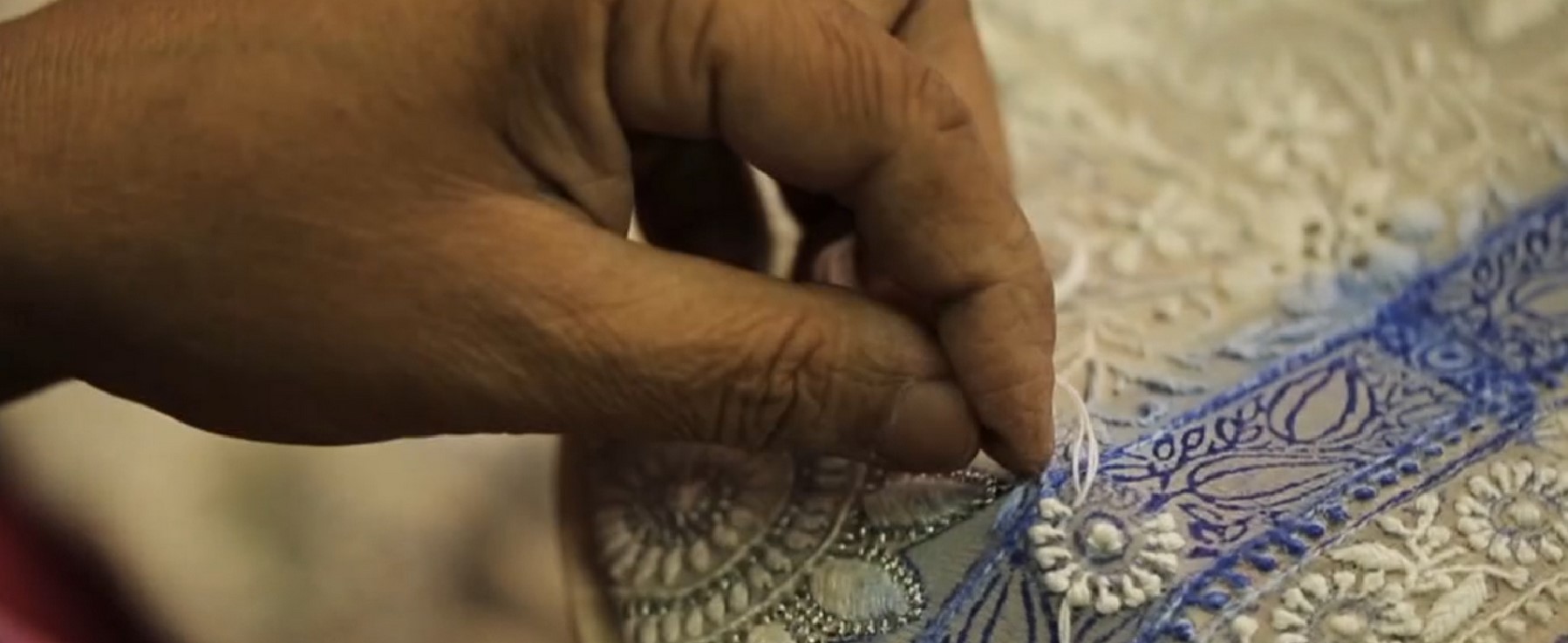
Sorry, we couldn't find anything that matches your search.
Destination

Famous Places to Explore in Hyderabad
A vibrant city with the imposing...

Raipur Tourist Places | Best Place to Visit
The stronghold of several erstwhile...

Ahmedabad
Declared as India's first UNESCO World...
#
Chikankari
A delicate hand embroidery technique done on fabrics like chiffon, muslin, organza, organdie and silk, chikankari is one of the most important crafts in Lucknow. The word 'chikan' means embroidery, and this form of art incorporates 36 different stitching techniques. In the beginning, only white yarn or muslin cloth was used. Stitching is done on the back of the cloth whereas the design is made on the front by tiny, running stitches. There are three main types of stitches – flat, embossed, and jaali (net effect). Due to a Persian influence, flowers have a permanent place in this art form. Typical chikankari motifs include creepers and vines. However, the types and styles in which these flowers are made keep varying with fashion trends. Today, there are hundreds of retailers of chikankari fabric across the country. In Lucknow, the lanes of markets are dotted with shops selling chikan work in various forms. You can pick up shirts, kurtas, bedsheets, table cloth, pillow covers and many other items adorned in chikankari.
The technique is supposed to have been introduced by Mughal empress, Nur Jahan, in the 17th century. Another legend speaks of a thirsty traveller, who stopped at a village in Lucknow, and requested a villager for water. Humbled by the villager’s hospitality and generosity, he imparted the skill of chikankari to him as an act of gratitude.

Zardozi
This signature embroidery art of Lucknow has been around for centuries and has been been accorded a Geographical Indication tag (GI). Lucknow is the primary centre for zardozi, and apparels featuring this embroidery can be found in well-known shops of Chowk area, as well as other bazaars in the city. In Persian, 'zardozi' means gold embroidery.
The original process, which is known as “Kalabatun”, made use of silk threads wrapped in real gold or silver; the thread was subsequently sewn onto different fabrics, and then embellished with gold threads, spangles, seed pearls, wires, beads, sequins etc. In the times of the nawabs, zardozi was used to decorate tapestries and wall hangings. Even elephants and horses were covered with heavy cloths adorned with zardozi. In that era, this form of embroidery was considered a luxury, since it could only be done on heavier fabrics like velvet, satin and silk. Therefore, only the royalty could afford it. It was regarded as a symbol of opulence.

Perfumes/Attar
The city of Lucknow is known for its fine perfumes that are available in beautiful bottles of cut-glass work. Perfumers in Lucknow make delicate and lasting fragrances using various aromatic herbs, spices, sandal oil, musk, essence of flowers, and leaves. Attar, derived from Persian word 'atr' means fragrance. Perfumes or attars have been in use in Lucknow since the 19th century. During the days of the nawabs, perfumes were also added to food to enhance the taste and aroma of the dish. It is said that Mughal empress, Nur Jahan, would bathe in water perfumed by rose water, thus encouraging people to start extracting scented oil from the flower.
Legend has it that the practice of using natural substances to derive scents came from ascetics who would burn roots and other plant material during their meditative bonfires. The sweet smells lingered for a while, inspiring nearby villagers to experiment with flowers to find the right tones. Once they had attars down to a science, the villagers started presenting these fragrances to the nawabs, who would spray the halls and walkways of the palaces before the arrival of guests. Since attar also has therapeutic properties, when sprayed in public spaces, it would subtly put visitors at ease.







